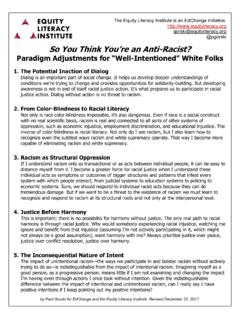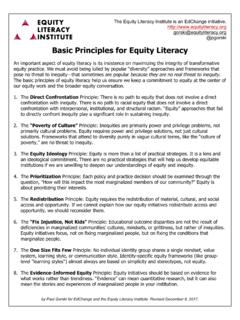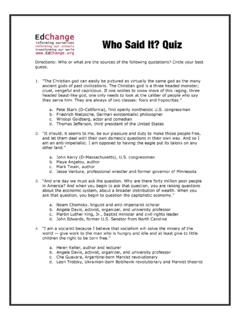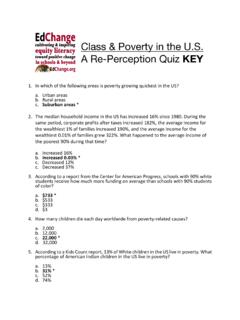Transcription of Equity Case Analysis Process - EdChange
1 The Equity literacy Institute is an EdChange initiative. @pgorski Equity Case Analysis Process Step 1: Identify biases and inequities presented in the case Step 2: Take stock of various perspectives, trying to remember the full variety of community members, including those who are involved directly and those who are involved at more of a distance. Step 3: Consider possible challenges and opportunities, paying special attention to biases and inequities and how the situation presents an opportunity for dialogue and positive change, not just for those immediately involved, but for the institution. Step 4: Imagine equitable and just outcomes, remembering that Equity requires a fair distribution of opportunity and access a resolution of the bias or inequity, not just a resolution of interpersonal conflict.
2 Step 5: Brainstorm immediate-term responses, thinking specifically about how you might respond immediately in order to overcome challenges and maximize opportunities. Step 6: Brainstorm longer-term policy and practice adjustments, keeping in mind that school and classroom conflict usually are symptoms of bigger structural inequities. Step 7: Craft a plan of action, including both immediate-term and long-term components. Designed by paul C. gorski and Seema Pothini for their book, Case Studies on Diversity and Social Justice Education (Routledge, 2014). Check out the book for this more than 35 school- and classroom based case studies on issues like race, class, (dis)ability, gender, sexual orientation, and religion, along with a more detailed description of the case Analysis Process .
3 Summary: The Equity literacy case Analysis Process encourages us to reflect deeply on school and classroom scenarios by considering them within a larger context of unequal access to privilege, power, and Equity . by paul gorski and Seema Pothini for EdChange and the Equity literacy Institute. Revised December 19, 2017.









